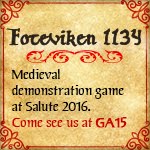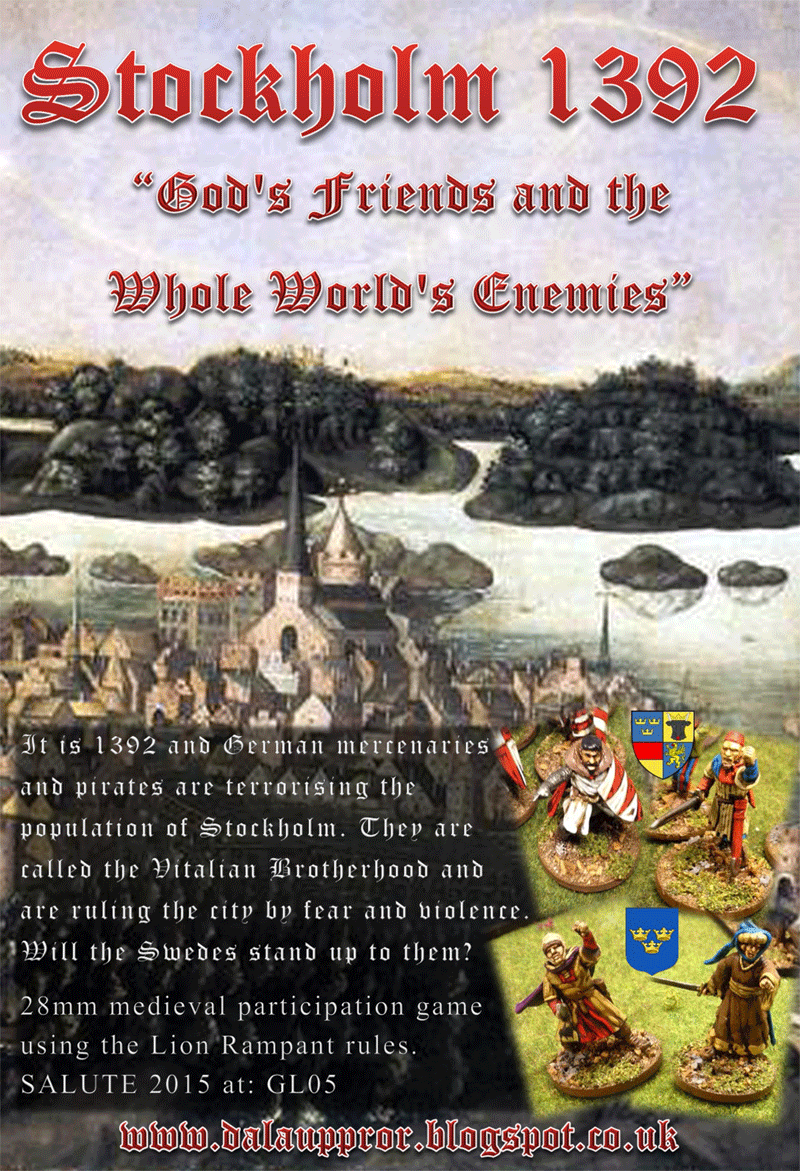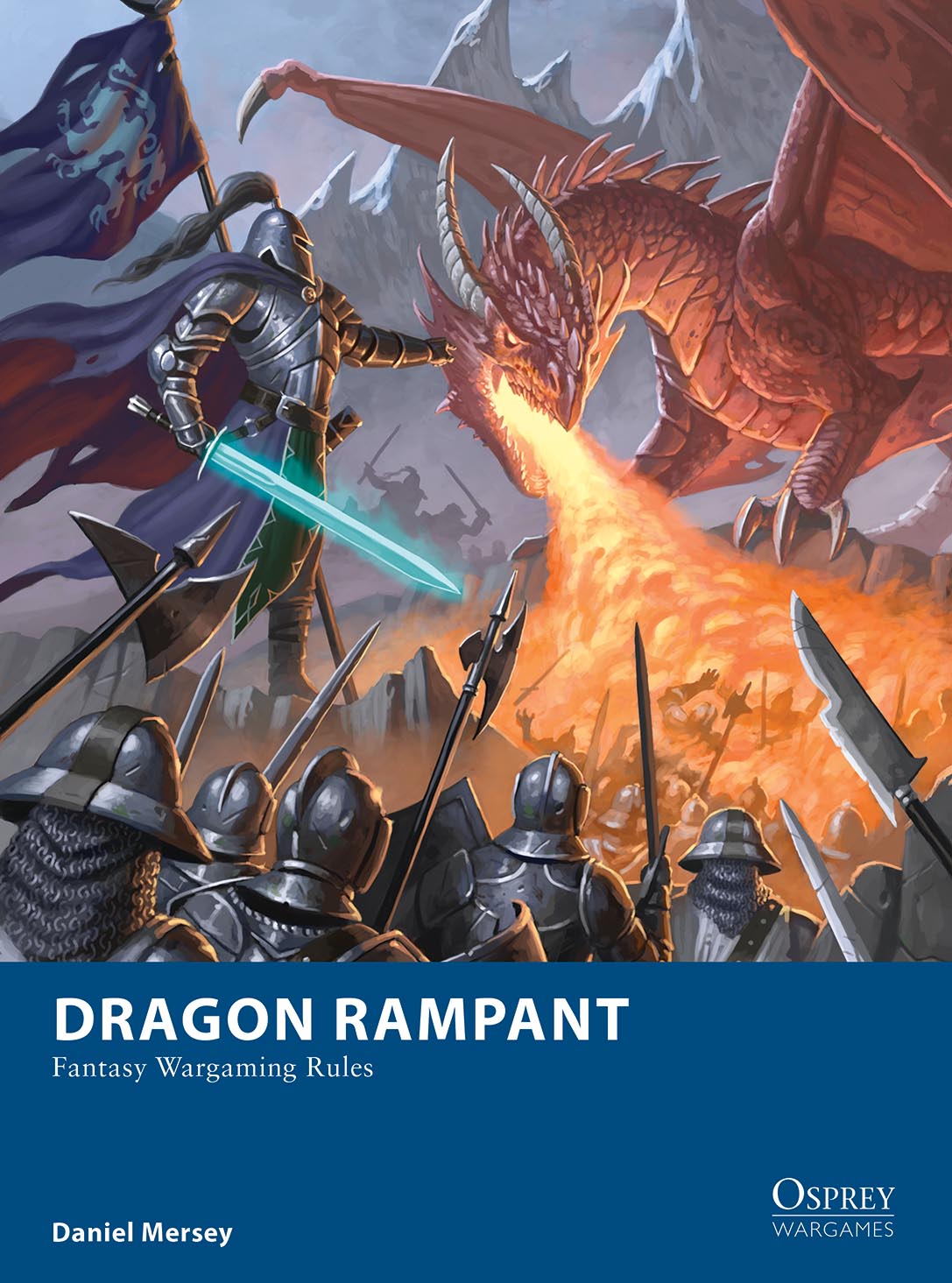This is the The 3rd command and last stand for Stage1 of my Swedish 15th century army. Minis from Perry and... not sure of the left banner holders...
At the moment this will represent The Swedish Archbishop Jöns Bengtsson from the House of Oxenstierna. But Archbishop Jöns sided both ways as long as he and he´s family had something to gain out of it...
The left banner are the Archbishops personal banner, a combination of the Coat of Arms of the house: Oxenstierna and the Archbishop Coat of Arms. The Right one are the Banner of Saint Erik, a banner that was keept in the Archbishop´s Cathedral of Uppsala.
As King Karl Knutsson (Bonde), to escape from money troubles, increased taxes and confiscated church property, dissatisfaction spread among clergy and people, and Bengtsson placed himself at the head of the opposition in 1457.
Entering his cathedral, he laid aside his pontifical insignia, took up helmet, breastplate, and sword, and announced his intention not to resume his pontifical robes until King Karl should be banished from the country. After the Battle of Älgsundet in february 1457, the King was forced to yield and fled to Germany.
Thereupon Christian I of Denmark was formally recognized King of Sweden, and crowned at Stockholm by the Archbishop.
General discontent soon followed, especially when Christian, on becoming heir to his uncle, Duke Adolph of Holstein, found himself in great financial straits. To meet his obligations, he levied enormous taxes, even in Sweden, without exempting ecclesiastics, religious foundations, or the moneys collected by papal mandate to defray the expenses of a crusade against the Turks.
During a temporary absence of Christian I in Finland, the archbishop held the regency of Sweden; seeing the people in revolt against him and the heavy imposts, he took up their cause and suspended the collection of taxes. The king showed his displeasure by arresting the archbishop and sending him to Denmark.
A revolution broke out afresh in Sweden: Karl VIII was recalled to the throne, and Christian I, to recover the country, became reconciled with his prisoner. The Archbishop went at once to Sweden, where he roused the people against Karl VIII, whom he excommunicated.
The archbishop succeeded finally in bringing about Karls' abdication, and the recognition of Christian I once more as King of Sweden. In reality, however, the archbishop held the effective reins of power and administered affairs as though he were the actual sovereign. He was unable to sustain this role. Discontented factions combined against him and, in 1466, elected Erik Axelsson Tott as regent, whereupon the Archbishop was compelled to retire.
Dissensions continued, and the king of the Swedish party, Karl VIII, once more took the place of the king who represented the union of the three countries. The archbishop found an asylum with his friend Magnus Gren, on the island of Öland. Here he died at Borgholm on 15 December 1467, "poor and exiled, regretted by no one, hated by many, and feared by all".
The key to the political activity of Bengtsson is to be found in the ambition that was a part of his character — ambition for his family and his country. There was a strong antagonism between the great Oxenstjerna family, to which the archbishop belonged, and the Bonde family, of which the king, supported by the national party, was member.
Moreover, the archbishop was aware that the nobility and the leading men of Sweden, before the Union of Kalmar, had in general failed to respect the clergy and the property of the Church. In a union of Sweden with Denmark and Norway, he foresaw a limitation of the power of the Swedish nobles; in his character of archbishop, it was clear to him that such curtailment would be a safeguard to the temporalities of the Church.
4 hours ago



















Cracking command stand - I would just suggest inserting one of the plastic arrows from the Perry boxed set into the wounded standard bearers chest. Not that I'm a fan on overt blood and gore on the wargames table, it would give reason for him falling wounded?
ReplyDeleteThanks Stephen !!!
DeleteGood sugestion, might get him an arrow or two:)
best regards dalauppror
Beautiful command stand and very interesting history.
ReplyDeleteExcellent command stand!!! Love the flags!!!
ReplyDeleteVery nice. I especially like how you've selected individuals who switched sides for most of your personalities. Makes it easier to fin appopriate opponents, I imagine.
ReplyDeleteThanks my friends !
ReplyDeleteThe ones with dubious sympathys are the nicest to include as they most often have a very interesting backgroud. And it also reflect the diverse warfare that occured in Sweden by the time.
Best regards dalauppror
What a great command stand and allways nice to learn a litle history while looking at the pictures.
ReplyDeleteA very nice command stand. I like a lot the flags, and the history is, again, very interesting.
ReplyDeleteBest regards.
Great looking figs and flags once again. And nice piece of history to go with them
ReplyDeleteThanks Mates !!!
ReplyDeleteGlad that you take the time to read the history part to:)
Best regards dalauppror
Love em,very nicely done :-)
ReplyDeleteJason
Great figures and flags and wonderful history!
ReplyDelete